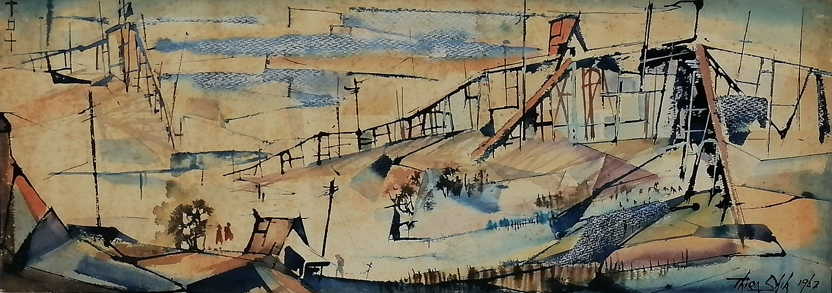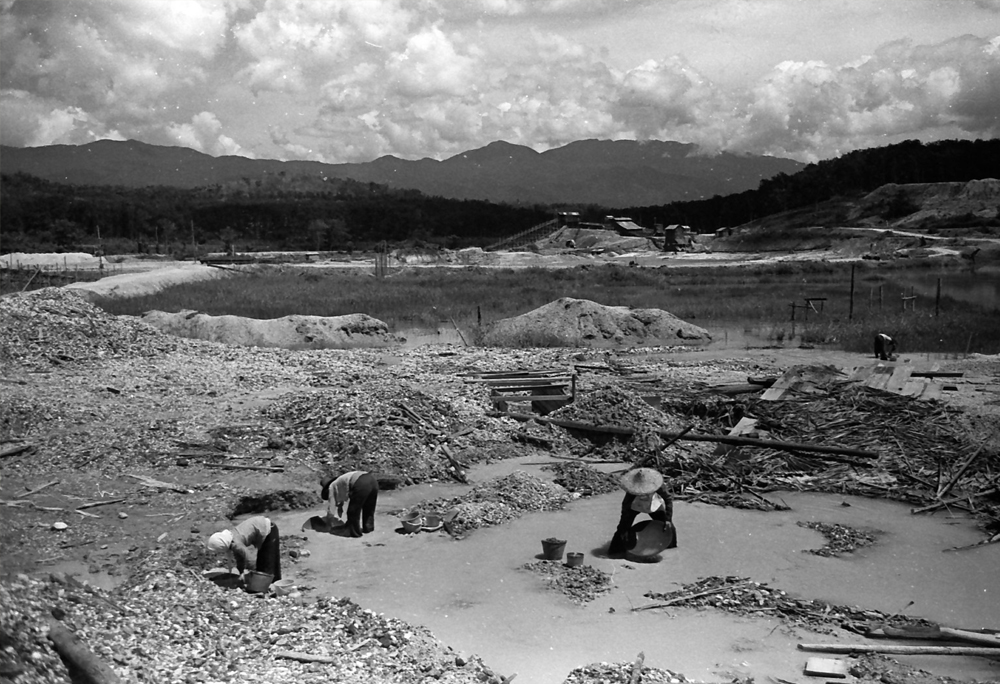The mining industry has a prominent presence in Malaysia, extracting various types of valuable minerals, namely, tin, gold, coal, and iron ore. Amongst the minerals, the earliest mineral discovered was tin that had attracted many foreign traders from the Middle East, India, and China to operate within Malaya. Tin was so popular that it was went on to be acknowledged as currency during the era of the Malay Sultanate, and was known as pitis, tra, bidur, and tampang. On the other hand, money made out of gold were referred to as kupang, mas, and dinar. These currencies were widely used in several states.
Melaka and Pahang were known as the earliest states to export tin ore, whereas Perak was recognised for their discovery of tin ore in Larut by Long Jaafar, in 1848. In the early stages, long before the British occupation, the locals used the traditional method of panning to form ingots before selling them. The rapid production of tin ore had been intensified after the influx of Chinese labourers.
Sungai Ujong, Kinta Valley, and Klang Valley were Malaysia’s main mining sites. As a direct result, new cities such as Taiping, Ipoh, and Kuala Lumpur emerged, as well as the construction of roads and railways. The first company to use the dredging method was the Malayan Tin Dredging Company in Batu Gajah (1912). This method subsequently replaced the traditional methods. By the end of the 19th century, with the introduction of more modern methods, the production of tin in Malaya had become one of the largest, owning 55% of world’s production.
Aside from tin, gold mining was also carried out by locals, but the quantities were smaller. In the 16th century, the main gold producer was the state of Pahang who traded their gold in Melaka. While in the Borneo archipelago, gold mining was carried out in Bau, Sarawak.
The development of the tin industry inspired Long Thien Shih to produce his watercolour piece, ‘Tin Mine’ (1962), which depicts tin mining, focusing on the structure of known as palong that can be found in mines. The palong was used to separate tin ore from other impurities. Likewise, other artworks such as Eric Peris' black and white photo, 'Dulang Washers' depicts the tenacity of dulang washers in the open mining area during the 1970s.
Since the decline of the global tin market in 1985, there was also a decline in its trading. According to a report from the Department of Mineral and Geoscience Malaysia, the number of tin mines recorded up until 2018 is only 19. Nevertheless, Malaysia remains one of the largest producers and smelters of metal in the world, and still holds potential to grow sustainably without adversely affecting the environment.






